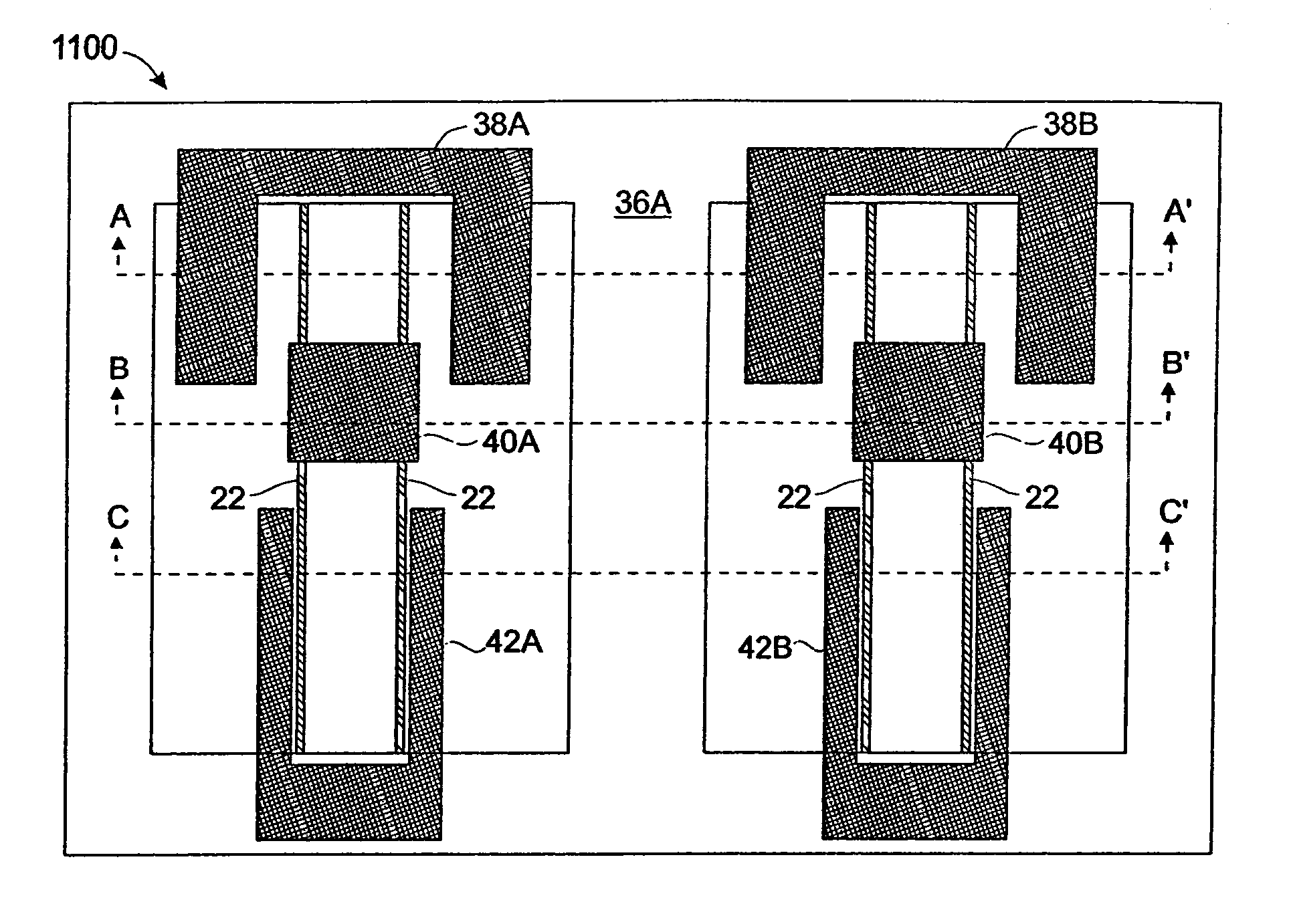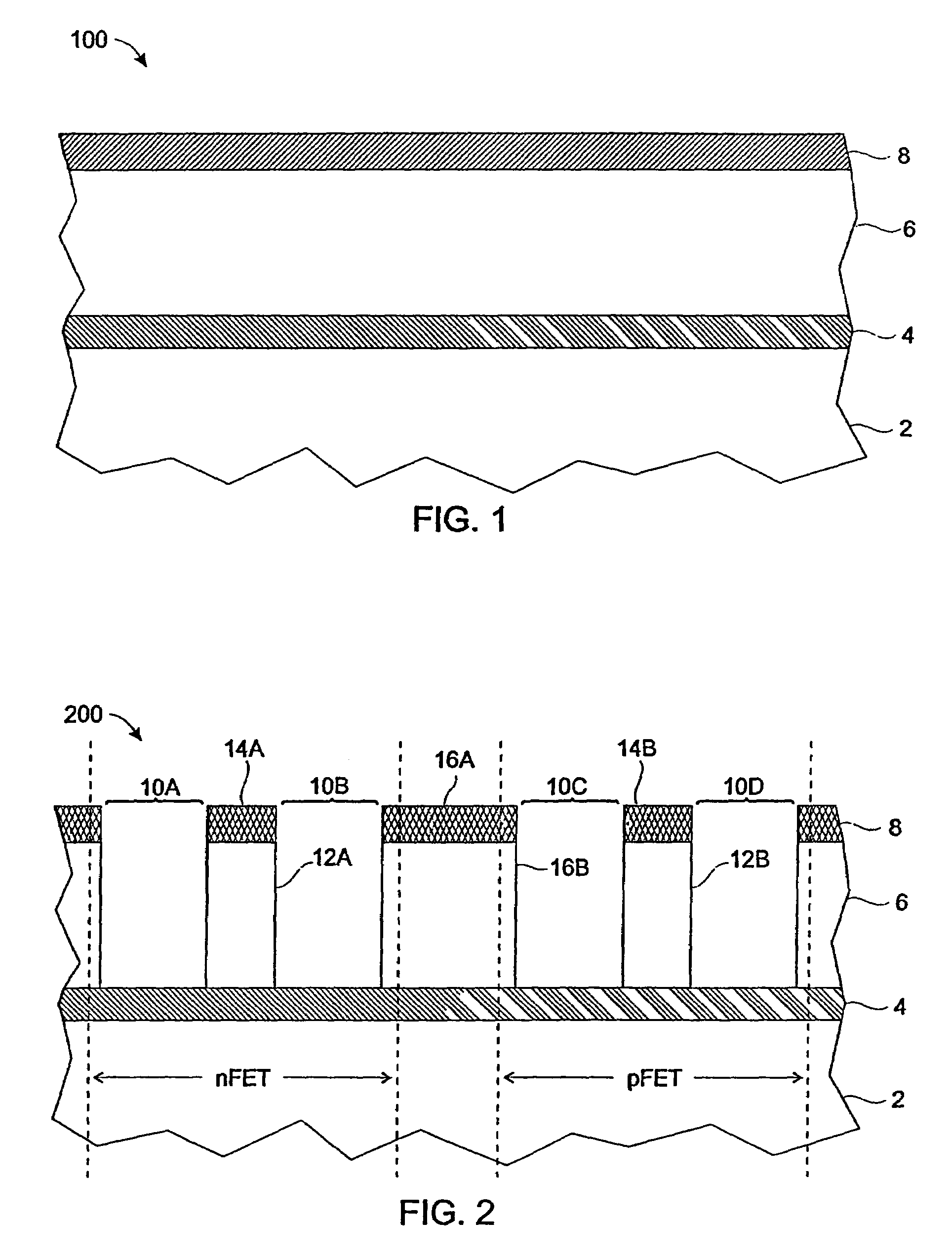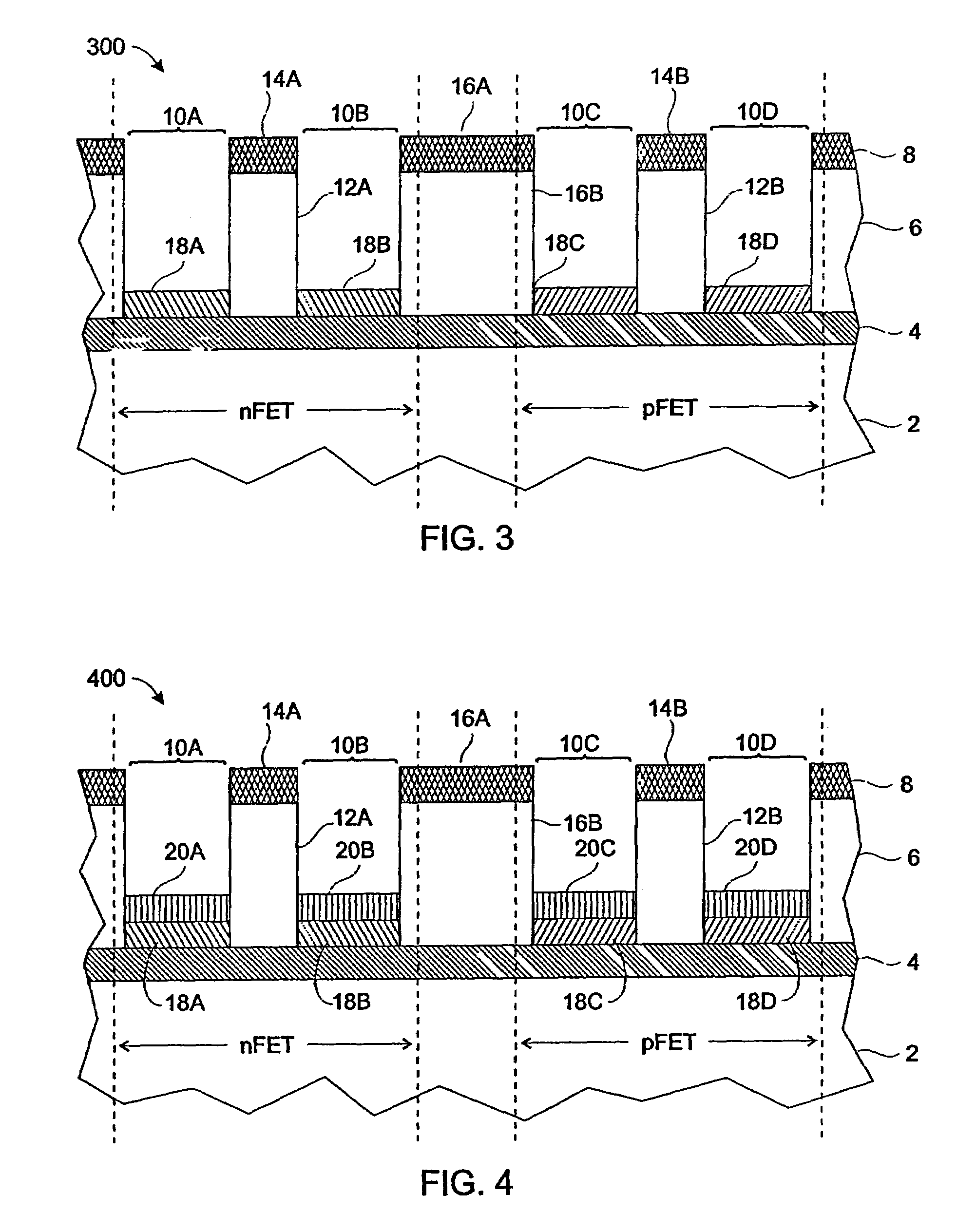Vertical Fin-FET MOS devices
a technology of vertical fins and mos, which is applied in the field of vertical mos devices, can solve the problems of large complexity involved, large size tends to work against performance, and large volume, and achieves the effect of low contact resistan
- Summary
- Abstract
- Description
- Claims
- Application Information
AI Technical Summary
Benefits of technology
Problems solved by technology
Method used
Image
Examples
Embodiment Construction
[0039]The present inventive technique produces high-density, vertical Fin-FET devices with low contact resistance by forming tall, thin vertical silicon “fins” that act as the transistor body. Appropriately doped source and drain regions are formed at the bottoms and tops, respectively, of the fins and gate structures are formed along sidewalls of the fins, overlapping the doped source and drain regions, thereby creating a vertical channel region in the fin between the source and drain regions. Current flows vertically through channels that form in the channel region adjacent to the gate structures and extending between the source and drain regions when an appropriate bias is applied to the gates. Through the use of selective doping, both nFET and pFET variants of the inventive vertical Fin-FET device are easily formed on the same substrate. Preferably, the substrate is an SOI (silicon-on-insulator) wafer, but any suitable substrate or portion thereof having a silicon layer formed o...
PUM
 Login to View More
Login to View More Abstract
Description
Claims
Application Information
 Login to View More
Login to View More - R&D
- Intellectual Property
- Life Sciences
- Materials
- Tech Scout
- Unparalleled Data Quality
- Higher Quality Content
- 60% Fewer Hallucinations
Browse by: Latest US Patents, China's latest patents, Technical Efficacy Thesaurus, Application Domain, Technology Topic, Popular Technical Reports.
© 2025 PatSnap. All rights reserved.Legal|Privacy policy|Modern Slavery Act Transparency Statement|Sitemap|About US| Contact US: help@patsnap.com



